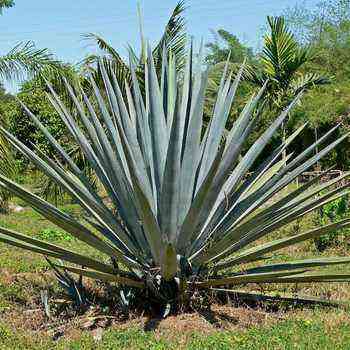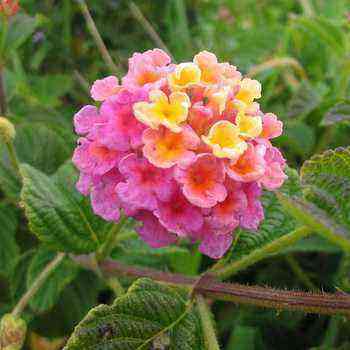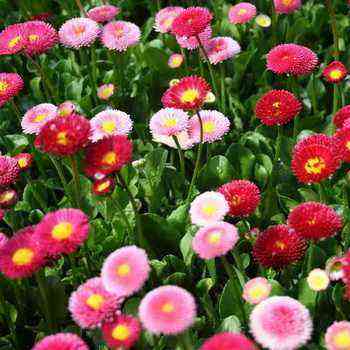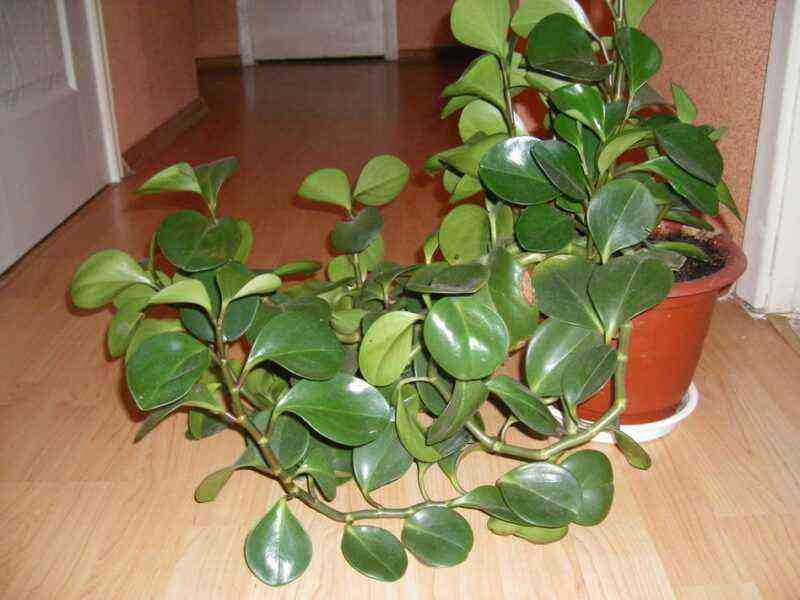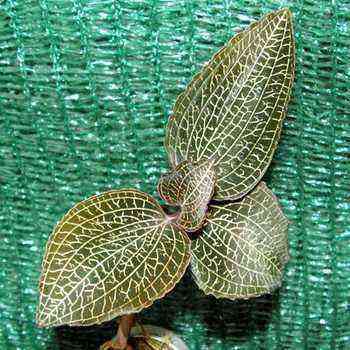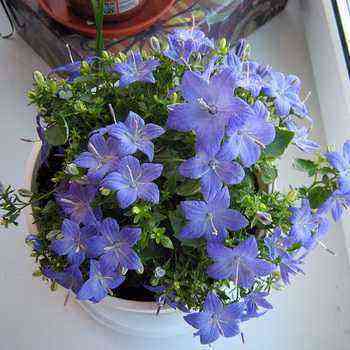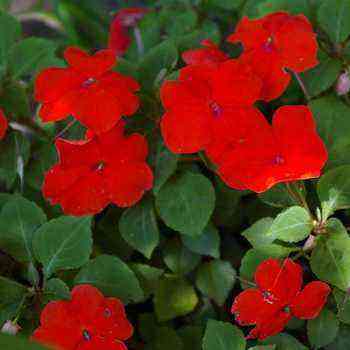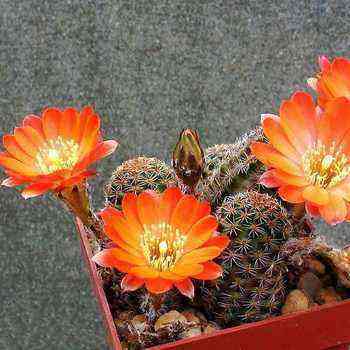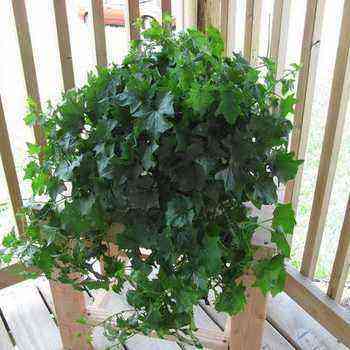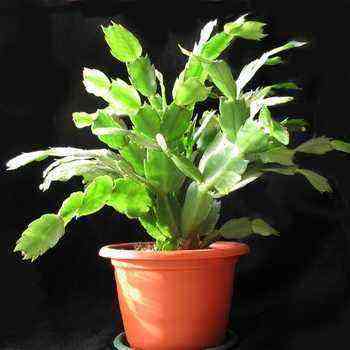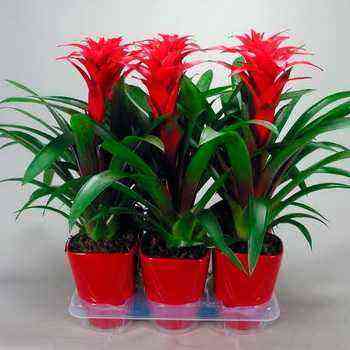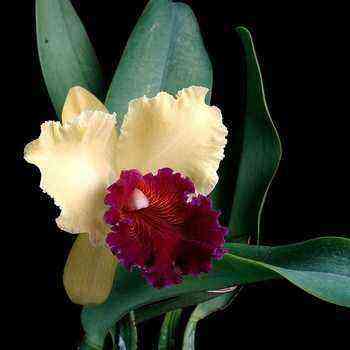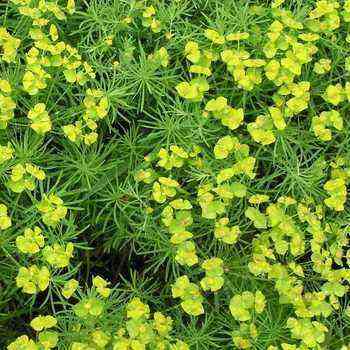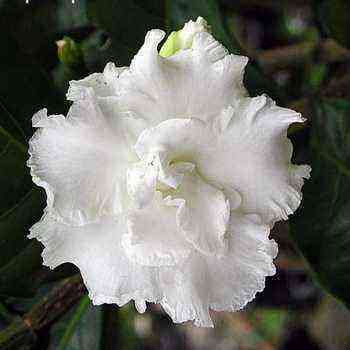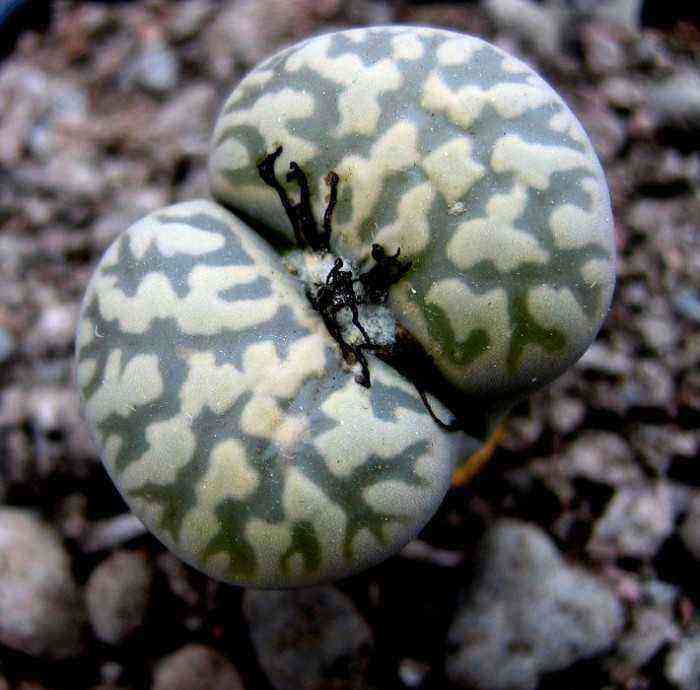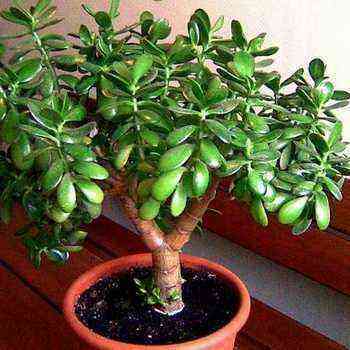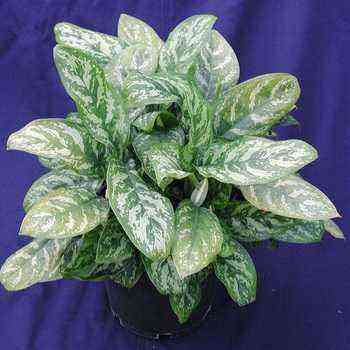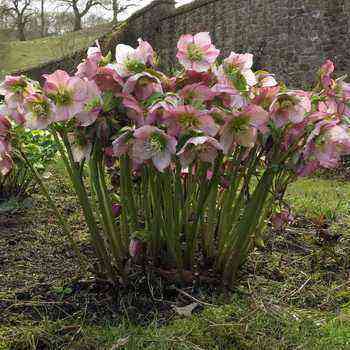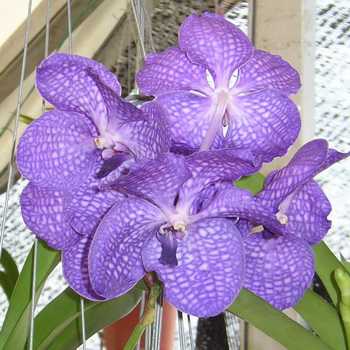 Orchids Vanda (VANDA) – one of the most beautiful representatives of the orchid family. In indoor floriculture, flowers of these plants are used very widely due to the brightness and unusual color of the petals, as well as the length of the flowering time. With skillful care, the Wanda orchid may not shed flowers for up to three months and delight the owners with new buds several times a year.
Orchids Vanda (VANDA) – one of the most beautiful representatives of the orchid family. In indoor floriculture, flowers of these plants are used very widely due to the brightness and unusual color of the petals, as well as the length of the flowering time. With skillful care, the Wanda orchid may not shed flowers for up to three months and delight the owners with new buds several times a year.
Below you will learn how to care for Wanda orchids and what types of these plants are cultivated at home.
The genus unites about 70 species of epiphytic plants common in the tropics of Asia, India, China and the Philippines. In addition, the culture has a huge number of interspecific and interspecific hybrids. This is due to the fact that Wanda orchid flowers easily interbreed both within the genus and with orchids of other genera.
All vandas are monopodial epiphytic and lithophytic orchids of warm and moderate content with powerful aerial roots of gray-green color and narrow belt-like leaves located on an erect shoot in two opposite rows. The flowers are large, beautifully colored, fragrant, in loose axillary racemes on long peduncles. The flowering of the brush lasts up to 3 months, while the vandas can bloom several times a year.
Wanda’s closest relatives include Doritis, Arachnis, Ascocentrum, Aerides, and Renantera. All of these orchids are epiphytes or lithophytes.
Blue Orchid Wanda and her photo
The most famous natural species is the blue Vanda orchid (Vanda coerulea), a plant native to the rainforests of India, China, Burma and Thailand. It is an epiphytic orchid with belt-like leathery leaves and thick aerial roots.

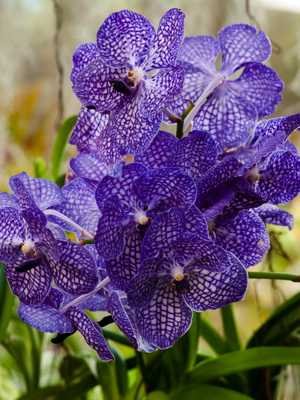
As you can see in the photo, the blue Vanda orchid has an inflorescence up to 30-60 cm long with large (up to 10 cm in diameter) pale blue flowers with dark veins. Bred brightly colored blue and pink forms with a dark mesh and a rounder and flatter flower.
Wanda bluish (Vanda coerulescens) – a miniature view, the leaves of which are collected in an outlet. Blooms in late winter – spring. The inflorescence is multi-flowered, consisting of long-lived fragrant blue flowers, 3-4 cm in diameter.
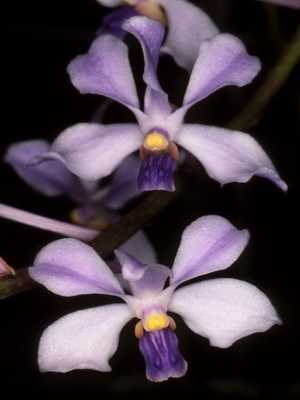

Check out the photo of this Wanda orchid – her lip is adorned with purple-blue markings. The first specimens of this species were found in 1837 by the famous botanist Griffiths.
Types of Wanda orchids (with photo)


Wanda Suarez, or tender (Vanda suaris) – stem 60-90 cm long bears dark green belt-like leaves. Flowering, which is usually abundant, begins in spring. The racemose inflorescence consists of 10-12 fragrant flowers with a diameter of 5-7 cm. The petals and sepals are wavy, white, with purple dots. The lip is three-lobed, bright pink.
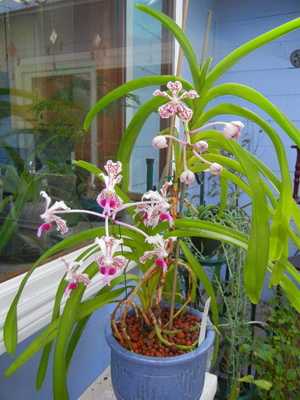
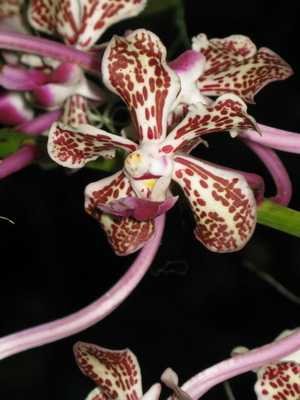
One of the popular Wanda orchid species is var. tricolor is a large plant, up to a meter or more. Peduncle with 5-10 fragrant star-shaped flowers, about 7 cm in diameter, white-cream, with red-brown spots and stripes.
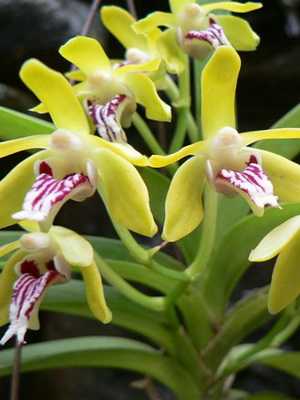
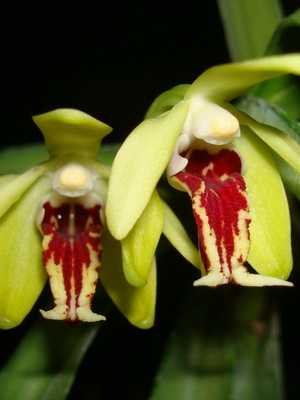
Wanda comb (Vanda cristata) – a species characterized by large, up to 5 cm in diameter, fragrant flowers of yellow or red color.
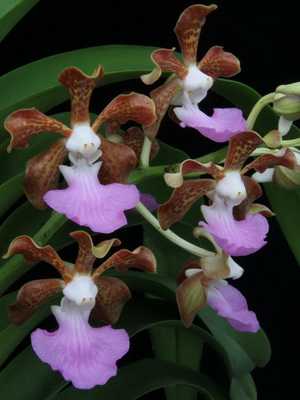
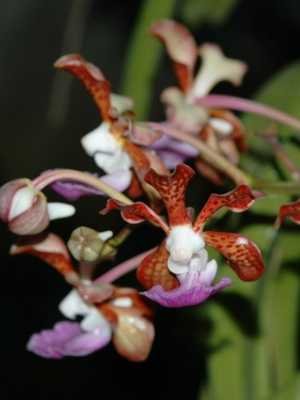
Wanda the great (Vanda insignis) – a large evergreen plant with a thick stem and tough elongated leaves. Blooms in summer. The peduncle bears a racemose inflorescence, consisting of several brownish-yellow flowers, 4-5 cm in diameter. The lip is large, rounded, pink. At the end of the XX century. many new hybrids have been obtained on the basis of this species in Thailand.
At home, preference is given to hybrids with spectacular large flowers, the flowering period of which depends on the type and conditions of detention. This bright and exotic orchid is used to decorate warm flower gardens in greenhouses and conservatories.
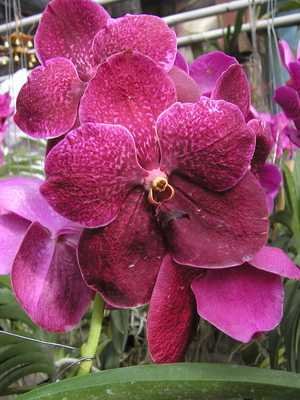
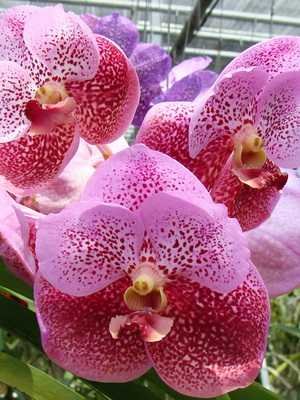
Vanda fuchs – the hybrid became popular at the end of the 1994th century, was officially registered in XNUMX, since then it has been widely used in the process of further hybridization. It and its derivatives are characterized by a peculiar spotting of the petals and lips of flowers. The background color can vary from blue-violet to pink-red.

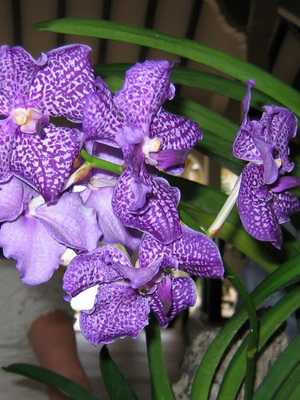
Orchid Vanda gordon dillon – a hybrid, characterized by a varied color of rounded flowers, collected in a racemose inflorescence 15-25 cm long.The leaves are elongated, light green, 15-20 cm long.

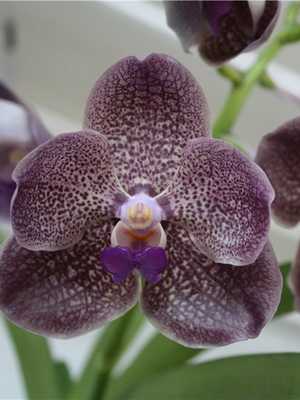
Orchid Vanda kultana Is a vanda hybrid that blooms several times a year. The stem is straight, 45-60 cm high. The flowers are large, fragrant, purple with white stains, collected in racemose inflorescences of 20-25 pieces. The Vanda Kultana orchid blooms for several months. Plants require a warm and moist environment.


Vanda roberts delight – a light-loving hybrid with a racemose inflorescence containing from 15 to 25 fragrant bright pink flowers.
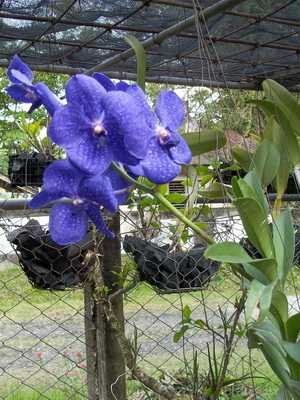

Vanda rothschildiana – a hybrid obtained by crossing two species – V. sonderiana and V. coerulea. Light blue flowers with a diameter of 4-5 cm are collected in multi-flowered inflorescences. Flowering begins at the end of September.
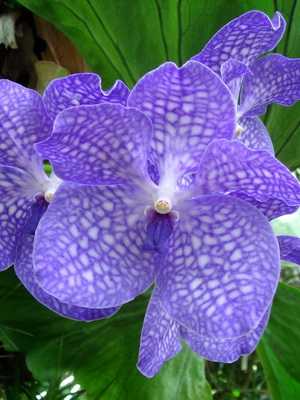
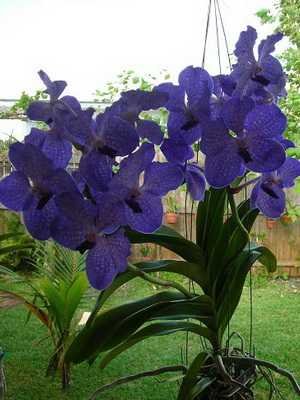
Vanda sansai blue – unpretentious hybrid with blue flowers. The multi-flowered inflorescence remains fresh and aromatic for up to 2 months. During flowering, the plant requires abundant moisture and intense artificial lighting.
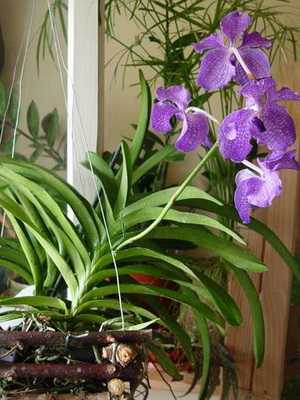

Vanda monster – a hybrid obtained by crossing the species V. tassellata and the vanda variety ‘Pranerm Ornete’. A large plant a meter or more in height. A tall peduncle bearing more than a dozen flowers is recommended to be tied or attached to a support.
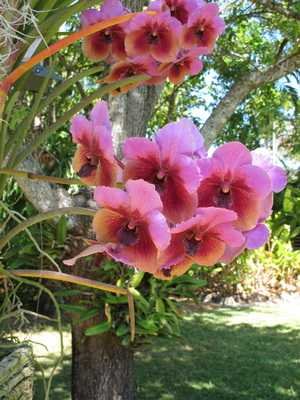
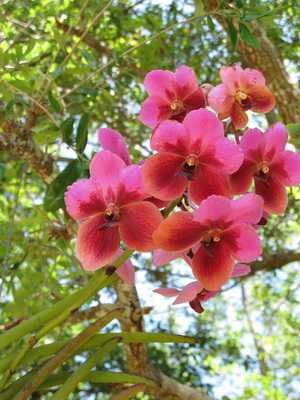
Vanda reverend masao yamada Is a brightly colored hybrid with a beautiful flower shape that inherits these characteristics from Vanda sanderiana.
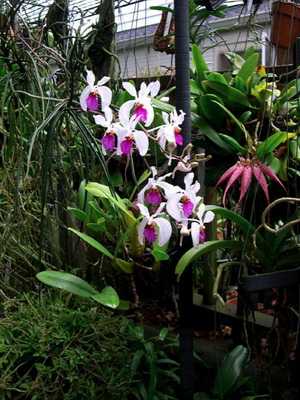

Vanda trikim, a synonym for Holcoglossum kirnballianum – a hybrid obtained by crossing the species V. suavis and V. kimballiana. Homeland – the territory of Thailand and Burma, where the plant is known as Nued-Pram-Lum-Dum. In contrast to the parental species, the variety is characterized by slightly curled petals and a more distinct division of the distal part of the lip into two lobes.
How to care for a Wanda orchid at home
To grow Wanda orchids, they choose a bright sunny room (shaded southern windows, western and south-western ones) with high humidity and a temperature of + 24 … + 26 ° С during the day and + 14 … + 15 ° С at night. The exception is blue wanda, which requires cooler conditions.
When caring for and growing Wanda orchids, plants can be placed on windows, in mini-plates, greenhouses and conservatories. They need more light than Phalaenopsis and Cattleya. The most demanding and, accordingly, difficult in the culture of vanda with cylindrical leaves. They are placed as close to the light as possible.
Blue Vanda culture is demanding for coolness, as it comes from the mountainous regions of India. A pot culture is preferred, however, under conditions of daily spraying and constant high humidity, the orchid can be kept with fully open roots, i.e. in a block culture.
Watering and reproduction of the Wanda orchid
Warm water is used to water the Wanda orchid; in the summer, watering should be abundant and even.
During active growth, it is necessary to fertilize every two weeks with a special fertilizer for orchids. The transplant is carried out before the active decomposition of the substrate begins, preferably in the spring. Frequent transplants are contraindicated. For new plants, a substrate for epiphytes is used.
Reproduction of the Wanda orchid is carried out by dividing the bush, while the adult plant is cut in half so that both halves have their own roots. Sometimes in flowering plants dormant buds of peduncles develop into vegetative “babies”. They are planted after the formation of their own root system.

